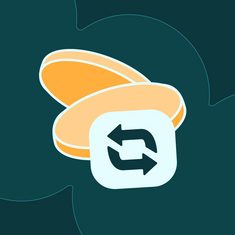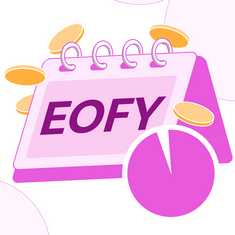
Need help on how to start a fundraiser? We’ll help you turn your ideas into actionable plans so you can make the most of any campaign.
As a nonprofit, you’re sure to have some fundraising ideas percolating. When you brainstorm, lots of exciting ideas may be on the table but you have to start narrowing them down. Then once you’ve spent time strategising, it’s time to put your plans into action.
Maybe the only experience you have with fundraising is a bake sale you ran in college or a Facebook fundraiser on your birthday. Maybe you have no idea how to start a fundraiser. Don’t worry! Between the fundraising technology available today (for free!) and the strategies and templates we’ve built for you, you can kick off a professional-looking and successful campaign up and running in no time.
Before You Start Your Fundraiser
Choose the fundraising strategy that makes the most sense for your nonprofit organisation, your fundraising goals, and the resources available to you. It may be a monthly giving campaign, a peer-to-peer fundraising campaign, or one of several other online fundraising alternatives. Read up on the fundamentals of what makes this basic strategy work so you can set yourself up for success.
And now, without further ado, here’s how to start a fundraiser in seven simple steps:
1. Set a SMART Fundraising Goal 🏅
In order to map out exactly how you’ll raise the amount of money your organisation needs, you’ll need a SMART fundraising goal: specific, measurable, achievable, relevant, and time-bound.
You can break down your overall goal into smaller pieces by different types of donors in your community or the various events and giving opportunities that make up your campaign. Consider kicking off your campaign with sponsorships from local businesses and asking for matching gifts to make individual donations go further.
It‘s not too early to think about the impact these funds will make. Building an impact statement into your campaign goal will come in handy later when you start creating marketing materials.
An example of a SMART nonprofit fundraising goal with a strong impact statement might sound something like this: Our Community Nonprofit needs $25,000 to provide after-school programming for 600 kids in 2023. We will write fundraising letters to raise $10,000 from corporate sponsors by July 1, and then we will kick off a two-month peer-to-peer campaign to raise the remaining $15,000 with a virtual walk challenge.
2. Choose Your Online Fundraising Platform 💻
There are a growing number of apps available to design and manage each part of your digital fundraising campaign. Of course, the more features and functions you can find on one free platform, the better! We’ve put together a comparison guide to help you sort through some of the most popular platforms and make the right decision for your nonprofit organisation.
Some things you’ll want to consider are:
- What do I need my fundraising platform to do, and what integrations do I need?
- How can I ensure my donors’ credit card information is secure? What are the processing fees and when are they charged?
- Does the platform charge a fee to use this software?
- How much room do I have to customise my fundraising page and campaign materials?
- What built-in analytics can I use to measure my campaign’s success?
- Can I find case studies of similar campaigns that have been successful on this platform?
- What have other users said about their experience with this platform?
Raisely was built for nonprofit organisations that want to do a lot with a little. Our platform integrates with Google Analytics, Salesforce, Zapier, and more to create a seamless experience for both you and your community.
We make it easy to gamify your campaigns with a progress bar, leaderboard, and custom achievement badges, and with our Strava integration, you can host a virtual active event from anywhere. And the best part? Raisely is free to use!
3. Map Your Supporter Journey 🗺
Figuring out how to start a fundraiser begins with mapping out a compelling supporter journey from start to finish. Sales research shows that it can take up to eight touchpoints with a “prospect“ to get them to bite.
Ultimately, the user journey should tell a story about what your nonprofit will do with the funds, invite supporters to make a quick and easy donation, thank them for their generosity, and then ask them to help you spread the word.
Begin with your first point of contact with your target audience (where they discover your organisation) and plan the entire journey that gets them to the donation form on your fundraising page.
There may be social media posts, emails, videos, or direct mail greetings along the way to develop your relationship with potential donors, and fundraising events or giving days that create multiple opportunities to give. You might encourage them to use a hashtag to challenge their loved ones to participate or invite them to join in a livestream during key moments in the campaign. The possibilities are endless!
4. Build Your Campaign 👷🏻
Once you’ve completed the first three steps, you have a pretty comprehensive plan in place for how to start a fundraiser. Now it’s time to put your new platform to use, creating your fundraising page, event sign-up page, marketing materials, and everything else your community will interact with during this campaign.
Raisely offers custom CSS, merge fields, and other tools for advanced developers to get the exact look and feel they want. But for everyone else, we’ve created versatile templates to make the design process simple, and you can easily customise everything with your logo, font, and brand colours.
5. Engage Your Fundraisers and Your Potential Donors 💬
After you’ve released your campaign into the wild, you’ll need to keep bringing new donors into the supporter journey you’ve created and motivate them to make an online donation. Well-crafted social media ads are a great way to engage your followers, capture a new audience, and drive more traffic to your donation page.
When it comes to social media posts and emails, automation is your friend! Then you can focus your attention on responding to your community and creating custom posts to recognise outstanding donors.
Watch for activity across all platforms and like, comment, and share any posts that mention your nonprofit organisation or your hashtag. This is how you go above and beyond to build great donor relationships and a truly interactive experience!
6. Track Your Success 📈
Remember when you set that SMART goal? You should have identified some important metrics that’ll help you determine if you‘re on track throughout your fundraising campaign.
Last year we completely overhauled Raisely’s reporting suite with several default reports, the ability to save custom reports, and a report scheduler to grab snapshots at key moments in your campaign. Share progress updates with your team and your community to keep them motivated. When people see that you’re nearing your goal, they’ll be more likely to give.
7. Celebrate and Thank Your Community 🎉
Finally, and most importantly, you’ll need to thank your community of fundraisers, donors, sponsors, and anyone else who has contributed to your success. The more you can personalise thank-yous, the better.
Emphasise the impact your supporters are making with the amount of money they gave in direct communications with them. Use compelling quotes, photos, data visualisations, and any other assets you have to thank your biggest donors publicly (with their permission) in social media posts.
How to Start a Fundraiser With Raisely
There are a lot of moving pieces to consider when you’re kicking off a completely digital or hybrid fundraiser. Take a deep breath, stay focused on those SMART goals, and think about exactly where you want to be on the last day of your campaign.
Now that you know everything you should about how to start a fundraiser, we‘re here to help!
Ready to create your
next campaign?

Kelsey Hoff is a content marketing specialist, freelance writer, blogger, and poet. She creates emotionally intelligent content that “listens first” for effective, ethical thought leadership.




